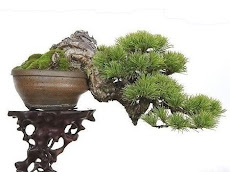Rapidly growing and responsive to training, you can quickly see the fruits of your labor when taking care of a Juniper Bonsai. This non-flowering and evergreen conifer have long, sprawling branches that can easily be styled to almost anything except the broom.
Considered as one of the most popular forms of bonsai, the Juniper has numerous varieties which include the Japanese Garden Junipers, Shimpaku, Chinese Junipers, Green Mound, just to name a few. Easy to manage, the Juniper can both grow indoors and outdoors, but it must be kept outside during winter for it to experience the dormant stage. By following this guide of proper care for Junipers, your tree will flourish and will not experience any difficulty while growing.
• Water your Juniper like most bonsai. Before watering your plant, check the soil by sticking your finger about half an each in the soil or if it is on a rock, lift it and feel the soil under it. If the soil is still moist, limit the amount of water that you'll pour on your bonsai to prevent root rotting. It is a general rule to never let you bonsai go dry for a long time. Although there are bonsai that prefer short dry periods, keeping your bonsai dry for extended periods will surely kill your plant. When watering your bonsai, allow the soil to absorb the water first before pouring another one. Eventually, you will soon be able to determine a schedule depending on the climate of your area.
• Your Juniper will need filtered sunlight. Avoid exposing your bonsai to direct sun.
• It is also important to use fertilizer on your Juniper. Use organic liquid fertilizer and feed your plant once every two weeks during spring and fall. A chemical fertilizer can also be used but it should be diluted. Follow the instructions given by the manufacturer.
• Your Juniper should be repotted every two years when it is still young or about 5-6 years old then every 3-5 years thereafter. Although it can be repotted in any time of the year, the best time is during spring or fall. After repotting place it in a cool and shady area and give liberal amounts of water until new roots appear.
• Provide it also with proper winter care by keeping it under cool temperatures usually under 600F to allow it to rest. Avoid exposing it to dry winds and extreme cold temperatures by using window wells, mulch beds or enclosed unheated rooms.
Following these instructions properly will help maintain your Juniper bonsai healthy and always beautiful. Read more about Juniper bonsai and have fun with your plant.
Article Directory: http://www.articlecube.com
Information on tree diseases can be found at the Tree Facts site.
Saturday, October 25, 2008
Taking Care Of Your Juniper Bonsai
Subscribe to:
Post Comments (Atom)




No comments:
Post a Comment